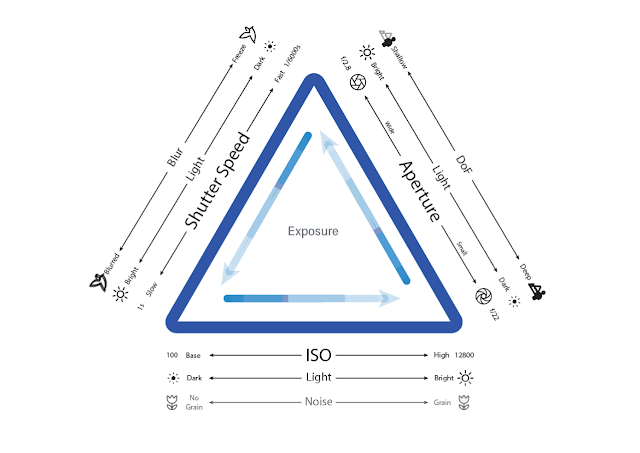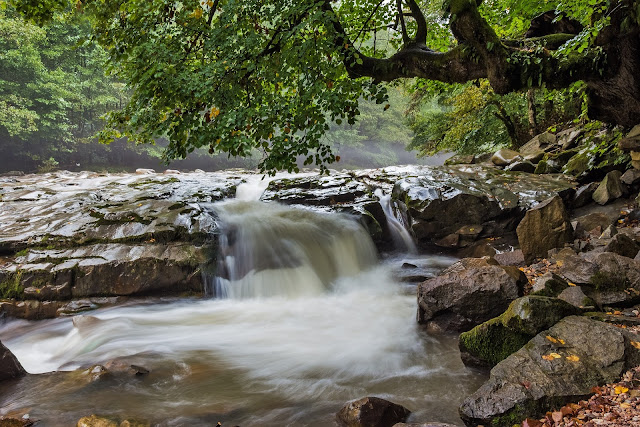Understanding Shutter Speed in
Photography
Understanding
Shutter Speed is key to become and expert photographer.
How does
shutter speed work, how does it affect exposure and the way to require
advantage of it to supply creative effects?
Learning
the way to set the shutter speed in your camera will take you out of automatic
mode and dramatically improve your photography.
Along
with ISO and Aperture, shutter speed it’s a part of the exposure triangle.
It not
only affects the brightness of your picture but it also allow you to add a
creative touch by controlling motion blur or by “freezing” action.
In this
guide I’ll introduce you to the present important camera setting and if you
would like to find out more scroll to the tip of this text to induce the link to
the last word Guide to Landscape Photography.
What is Shutter
Speed?
Shutter
speed could be a setting in your camera and it’s literally the length of your
time your camera shutter remains receptive let light are available in hit the
camera sensor to record the image.
The
shutter will fire immediately once you press the shutter button (or shutter
release) and can close immediately after the sensor has collected the sunshine.
The
Shutter speed is measured in seconds or fractions of it.
A 1/2
shutter speed means a half a second speed and 10″ is 10 seconds, which is taken
into account a really slow shutter speed and it’s normally wont to produce
motion blur.
At 1/1000th of a
second, you will freeze motion instead.
Modern cameras such can
handle speeds of 1/4000th.
Most expensive cameras
get to 1/8000th of a second or 1/32000th of a second on the faster-hand side.
While 60 seconds is the
longest available speed, mostly used for long exposures and night photography
How to Choose the Optimal Shutter Speed in Your Camera?
In
automatic mode, your camera will set the shutter speed for you.
Sometimes
it will get it right some others instead it won’t.
You can
start shooting in automatic mode and see the different values your camera sets
in different environments.
So
you’ll have a rough idea of how it changes in different environments and light
conditions.
Though,
I highly recommend you exit away from Auto mode as soon as possible and start
to manually experiment with different shutter speeds.
You can either
use Manual mode or you can start with Shutter Priority mode, which I recommend.
When you
use Shutter Priority mode your camera will decide the aperture based on the
Shutter speed.
You can
set the ISO or let the camera automatically set it for you.
Why
changing the exposure and ISO?
Shutter Speed and
Exposure

Shutter
Speed has an impression on the Exposure.
It’s a part of the Exposure Triangle along with Aperture and ISO.
In order to properly expose your pictures, you’ll have to consider if lowering
or increasing the shutter speed.
Depending on the sunshine conditions of the environment you’re shooting in and
therefore the in-motion elements in your scene you’ll set your shutter speed.
In low light conditions, if you’re forced to lower the speed to urge more light
into the sensor, you won’t be ready to handhold your camera since the image are
shaky and blurry.
In those cases, you either need an honest camera in-body stabilization or a
tripod.
Shutter speed is additionally referred to as Exposure time.
The longer the exposure time (ie. slow shutter speed) the more your image are
blurred if the topic is in motion. For action sports photography like soccer
photography or surf photography, as an example, you would like a quick shutter
speed to freeze the image. For static subjects, if your camera isn't steady on
a tripod and your shutter speed is slow your image are blurry and shaky.
Shutter
Speed and Long Exposure

Shutter
speed can be used to obtain some amazing creative effects.
One is
called “Long Exposure”.
The Long
Exposure technique is pretty common among photographers since it allows you to
create dreamy images, like the one above.
Using a
very slow shutter speed, hence a Long Exposure time objects in-motion such as
water will produce a misty smooth effect in your image.
You will
need a tripod for this otherwise the static elements in your picture will be
shaky and blurred.
Make to
use an aperture value that won’t make the image be too overexposed since a slow
shutter speed will let in more light resulting in a brighter photo.
In Conclusion
When photographing moving
subjects you'll be able to decide the effect you would
like to get and use shutter speed to attain it.
For misty water or motion blur, use a protracted exposure time.
To freeze action use faster shutter speed.
By mastering shutter speed you're able to decide the
effect you would like to get and choose the
proper setting in your camera looking on true.
Make sure you mostly find the proper balance in your exposure
triangle.
Shutter speed itself isn't enough and you furthermore
may must understand how to line the correct aperture
and ISO.



































